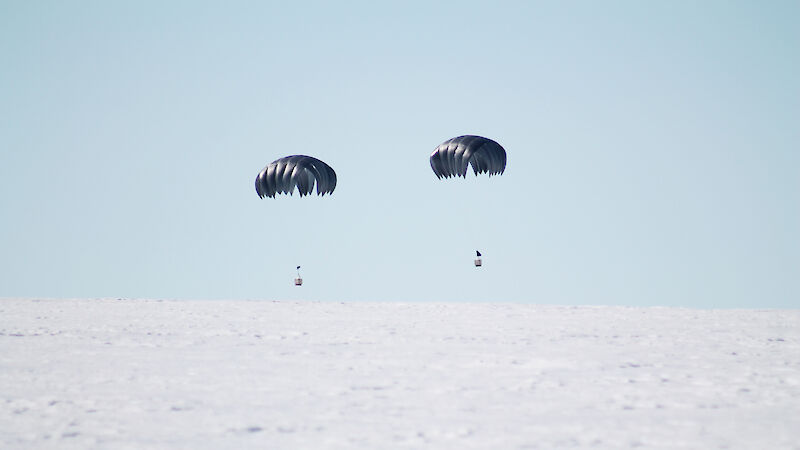Two new parachute systems were successfully used to resupply Casey research station with dried food and forklift parts, in January.
Three ‘low-cost’ and two ‘precision-guided’ parachutes were deployed near Casey by a Royal Australian Air Force (RAAF) C-17A Globemaster III.
The Low Cost Aerial Delivery System (LCADS) provides a cost-effective means of delivering airdrop cargo to Antarctica, and can be packed down into a smaller package than traditional parachutes, on recovery.
The Joint Precision Aerial Delivery System (JPADS) is a GPS-guided system which steers the parachute and provides airdrop delivery from higher altitudes and with high accuracy. It could be used to resupply remote deep-field camps, tractor trains on inland traverses, or vessels stranded in sea-ice.
Remarkably, the precision-guided parachute dropped from 10,000 feet at a speed of 270 kilometres per hour and landed its cargo of foodstuffs within 30 metres of the target.
The airdrop trial was also used to train Australian Antarctic Division ground crews in the methods and equipment required for using aerial delivery systems in Antarctica.

